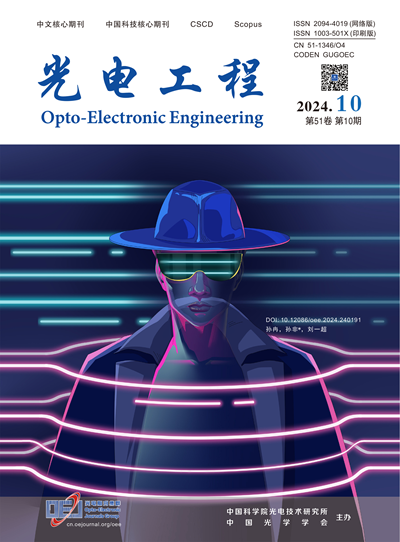Background suppression for infrared dim small target scene based on adaptive gradient reciprocal filtering
Q3 Engineering
引用次数: 3
Abstract
: Due to the small scale and weak energy of the infrared dim small target, the background must be suppressed to enhance the target in order to ensure the performance of detection and tracking of the target in the later stage. In order to improve the ability of gradient reciprocal filter to suppress the clutter texture and reduce the interference of the residual texture to the target in the difference image, an adaptive gradient reciprocal filtering algorithm (AGRF) is proposed in this paper. In the AGRF, the adaptive judgment threshold and the adaptive relevancy coefficient function of inter-pixel correlation in the local region are determined by analyzing the distribution characteristics and statistical numeral characteristic of the background region, clutter texture, and target. Then the element value of the adaptive gradient reciprocal filter is determined by combining the relevancy coefficient function and the gradient reciprocal function. Experimental results indicate that the sensitivity of the AGRF algorithm to the clutter texture is significantly lower than that of the traditional gradient reciprocal filtering algorithm under the premise of the same target enhancement performance. Compared with the other nine algorithms, the AGRF algorithm has better signal-to-noise ratio gain (SNRG) and background suppress factor (BSF).基于自适应梯度倒易滤波的红外弱小目标场景背景抑制
:由于红外弱小目标的规模小、能量弱,为了保证后期对目标的检测和跟踪性能,必须对背景进行抑制,对目标进行增强。为了提高梯度倒易滤波对杂波纹理的抑制能力,降低差分图像中残留纹理对目标的干扰,本文提出了一种自适应梯度倒易滤波算法。在AGRF中,通过分析背景区域、杂波纹理和目标的分布特征和统计数值特征,确定局部区域像素间相关的自适应判断阈值和自适应关联系数函数。然后结合相关系数函数和梯度倒数函数确定自适应梯度倒数滤波器的元值。实验结果表明,在目标增强性能相同的前提下,AGRF算法对杂波纹理的灵敏度明显低于传统梯度倒易滤波算法。与其他9种算法相比,AGRF算法具有更好的信噪比增益(SNRG)和背景抑制因子(BSF)。
本文章由计算机程序翻译,如有差异,请以英文原文为准。
求助全文
约1分钟内获得全文
求助全文
来源期刊

光电工程
Engineering-Electrical and Electronic Engineering
CiteScore
2.00
自引率
0.00%
发文量
6622
期刊介绍:
Founded in 1974, Opto-Electronic Engineering is an academic journal under the supervision of the Chinese Academy of Sciences and co-sponsored by the Institute of Optoelectronic Technology of the Chinese Academy of Sciences (IOTC) and the Optical Society of China (OSC). It is a core journal in Chinese and a core journal in Chinese science and technology, and it is included in domestic and international databases, such as Scopus, CA, CSCD, CNKI, and Wanfang.
Opto-Electronic Engineering is a peer-reviewed journal with subject areas including not only the basic disciplines of optics and electricity, but also engineering research and engineering applications. Optoelectronic Engineering mainly publishes scientific research progress, original results and reviews in the field of optoelectronics, and publishes related topics for hot issues and frontier subjects.
The main directions of the journal include:
- Optical design and optical engineering
- Photovoltaic technology and applications
- Lasers, optical fibres and communications
- Optical materials and photonic devices
- Optical Signal Processing
 求助内容:
求助内容: 应助结果提醒方式:
应助结果提醒方式:


